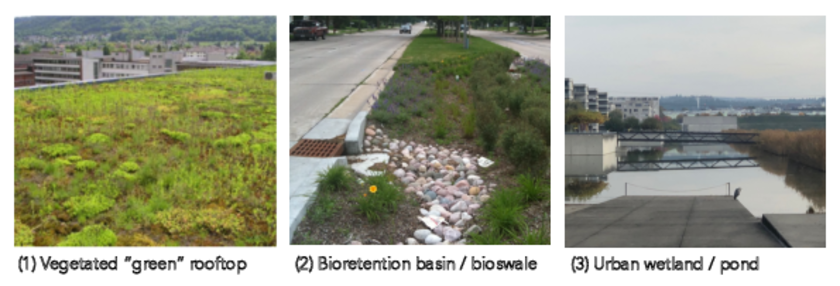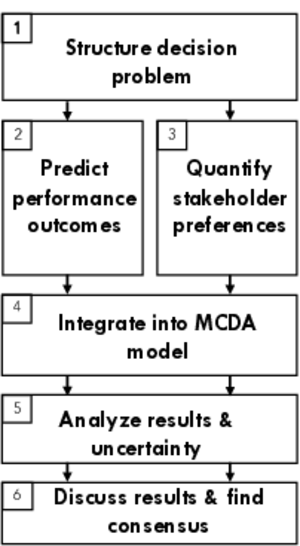Department Urban Water Management
BETTER: Blending design and dEcision-making for mulTi-funcTional bluE-green infrastructure
Developing an integrated strategy to support engineering design and decision making for blue-green neighborhoods in an uncertain future

Developing an integrated strategy to support engineering design and decision making for blue-green neighborhoods in an uncertain future
Integrating multiple ecosystem services into blue-green infrastructure design
In the next years, cities and urban areas are likely to face many environmental challenges caused by climate change and population growth such as urban heat island effect, higher urban runoff and biodiversity loss. Solutions are urgently needed that mitigate these effects and increase the resilience of urban infrastructure. Blue-green infrastructure (BGI), namely the use of natural and semi-natural elements like rivers, ponds, wetlands (blue elements) and elements like trees, parks, fields (green elements) in urban and land-use planning; are growing in popularity because of their provision of ecosystem services, such as regulation of the water, heat, and ecological balance. However, the design of BGIs typically focuses on reducing the stormwater quantity and improving its quality, and the co-benefits, such as urban heat mitigation and ecological preservation, are often overlooked. Moreover, little is known about the response and the relevance of BGIs in the future, when precipitation and temperature will differ from the historical average due to climate change.
The BETTER project aims to develop an integrated approach to support engineering design and decision making strategies of blue-green infrastructure (BGI) at a neighborhood scale. The BGI elements used for stormwater management will be evaluated to quantify their influence on heat mitigation and biodiversity enhancement in current and future climate scenarios. Hundreds of different BGIs scenarios consisting of combinations of green roofs, bioretention basins, urban wetlands, ponds, and trees will be modeled in Fehraltorf, an urban catchment in Switzerland. These combinations will also be evaluated alongside distributed energy and heat mitigation measures (e.g., solar panels and cool roofs).
Combining hydrological and microclimate models for performance evaluation
In the first step, the hydrological performance of the selected scenarios will be assessed for the current and future climate. Second, the heat mitigation performance of the same BGI scenarios will be evaluated for the current climate, comparing the outcomes with the hydrological performance in the first step. Finally, the ability to enhance the habitat quality for insect and amphibian will be analyzed using the water and energy balance simulations, comparing the performance with the hydrological and heat mitigation results.
Decision analysis to consider multiple objectives needed

These performance results are likely to yield synergies and trade-offs among scenarios for BGI. A preferred biodiversity strategy (e.g., focused on maintaining ponds as habitat) may yield poor results for stormwater management (e.g., focused on infiltrating runoff and reducing combined sewer overflows). Multi-Criteria Decision Analysis (MCDA) can be used to integrate different BGI co-benefits according to various stakeholder objectives and perspectives. The performance values estimated in this project will be used in an MCDA analysis to determine the ideal BGI strategy, given multiple objectives and weights. By increasing the knowledge of integrated and distributed BGI technologies among researchers, this project will also support practitioners to consider BGI in a holistic way, fostering the implementation of nature-based infrastructures and advancing the transition towards sustainable and resilience cities.
This link takes you to the MCDA-project website

